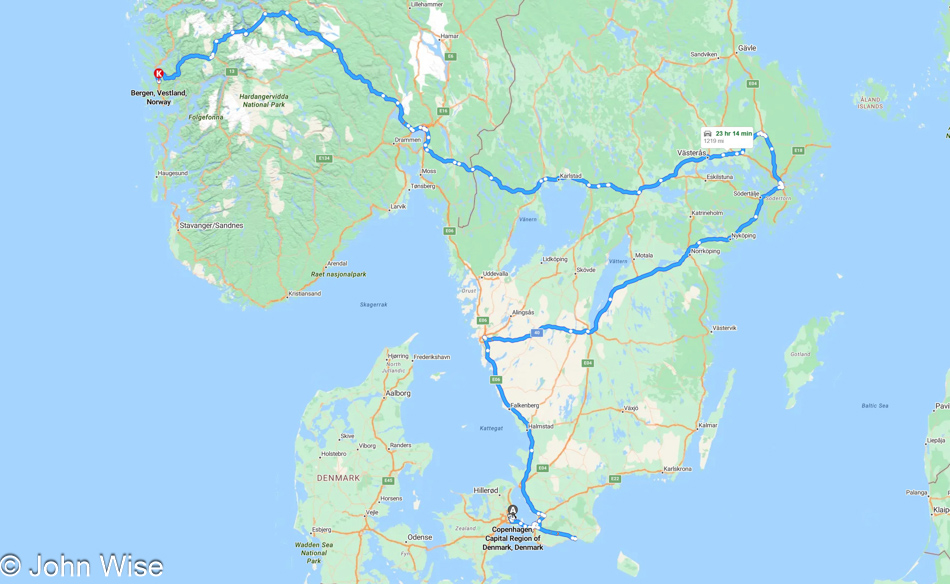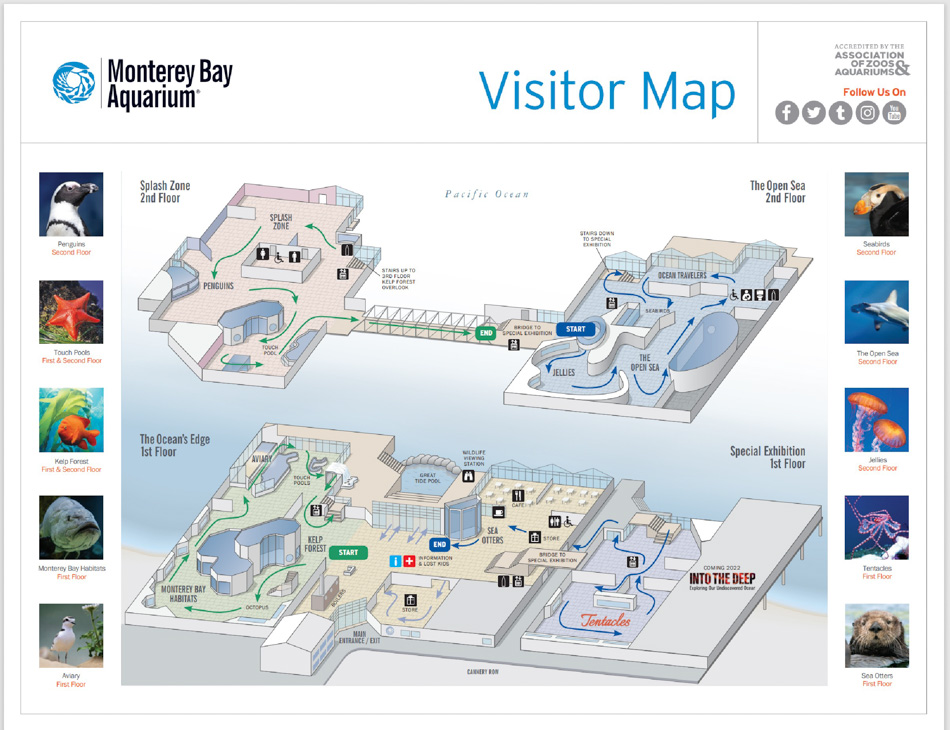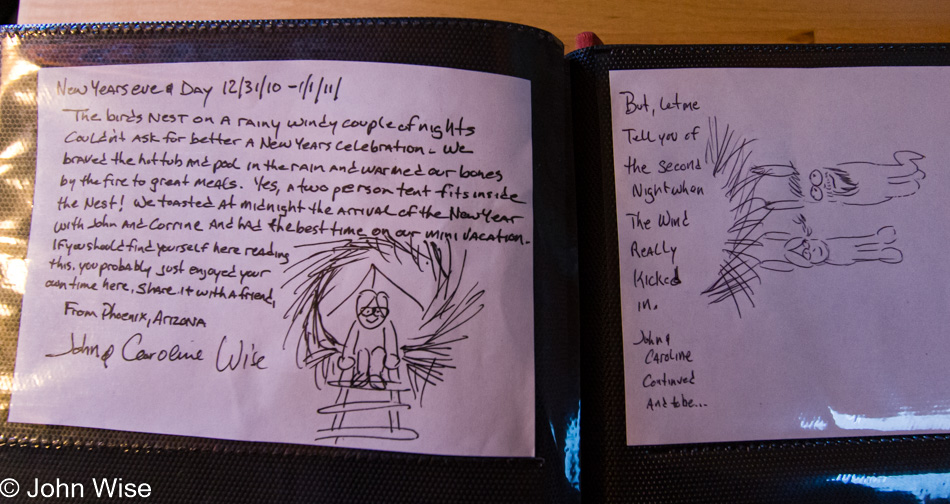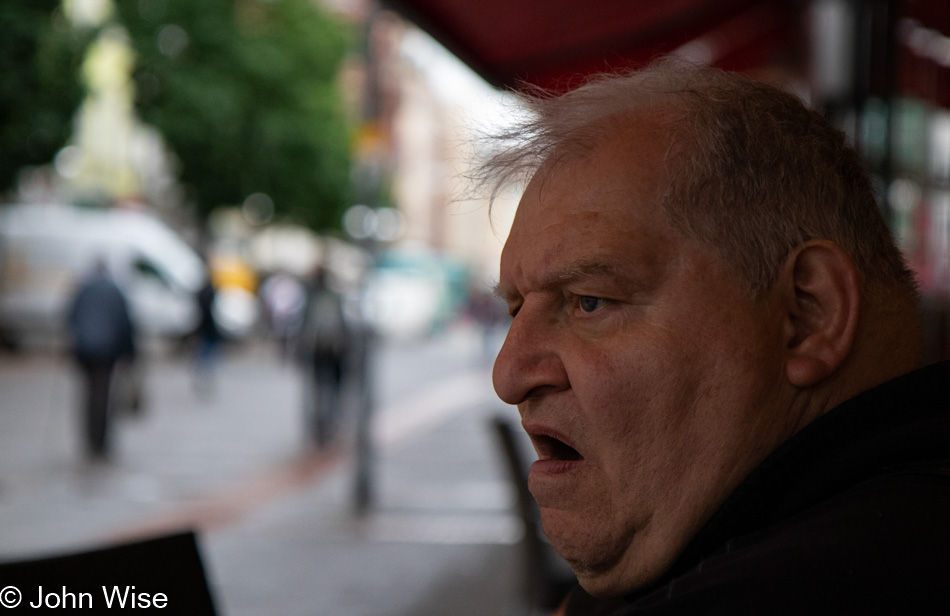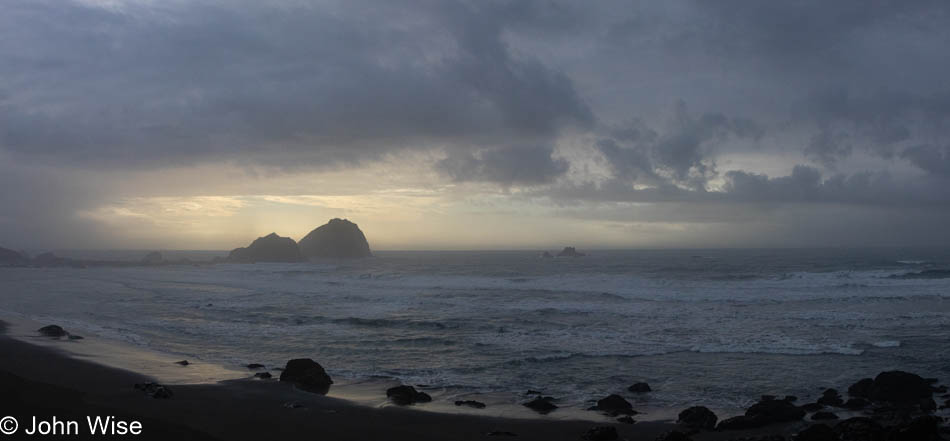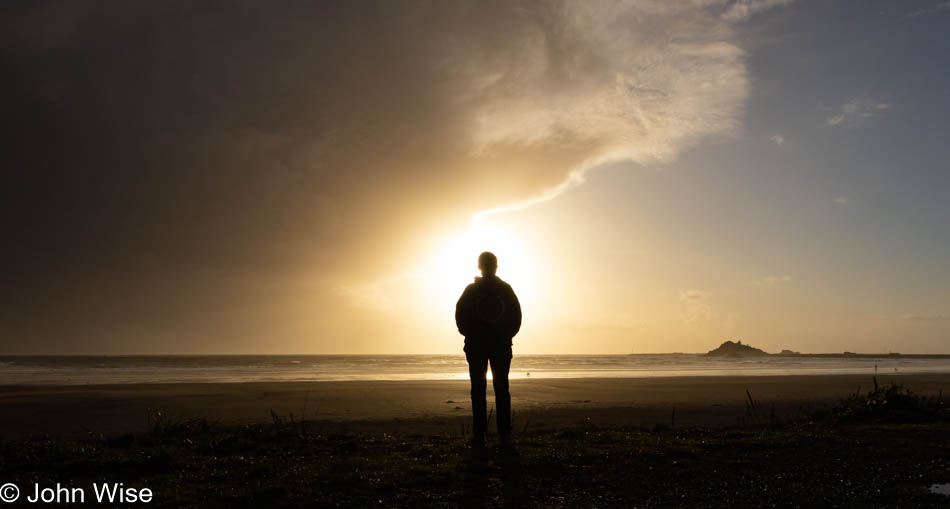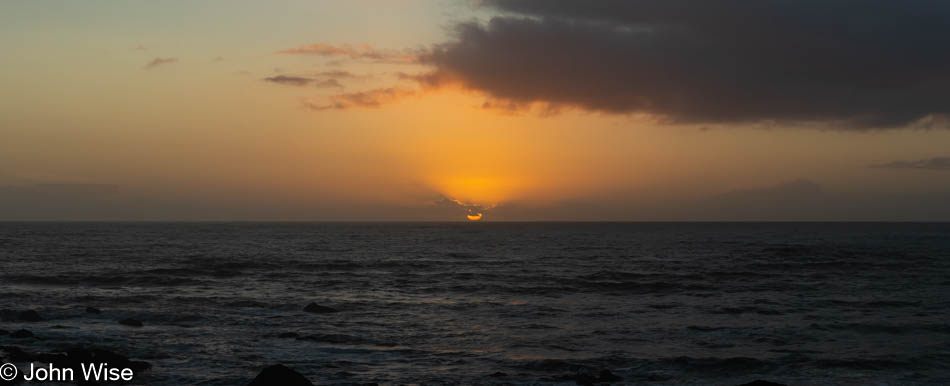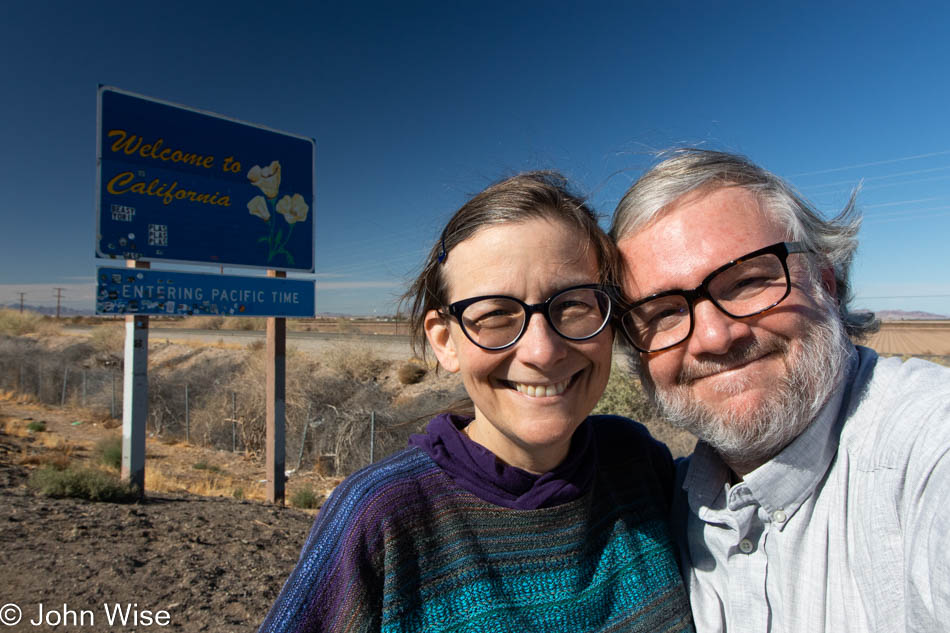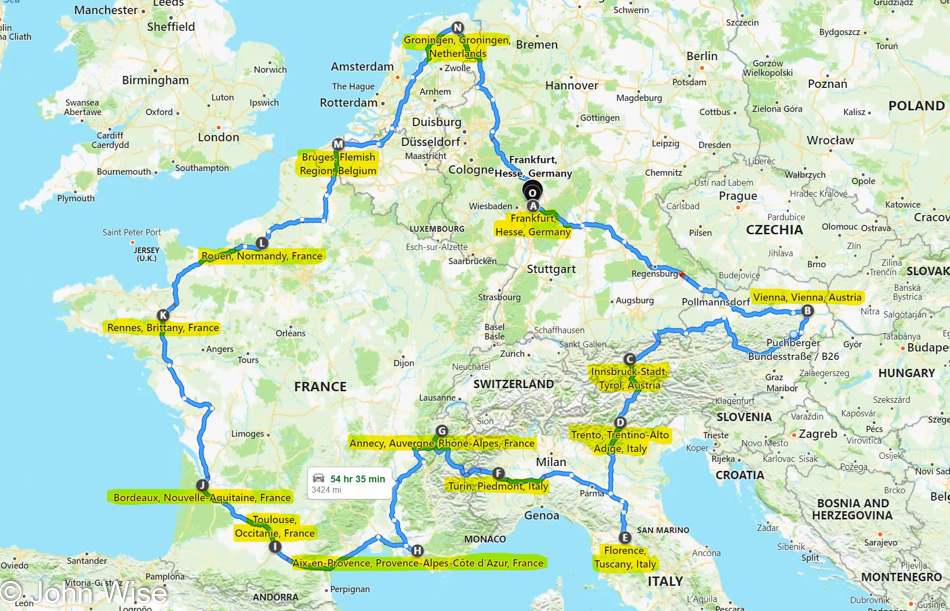
*** Yes, this is one super long wall of text, but in it is my sketch of a 1-year journey living and working across continental Europe. Should you invest the time to read this lengthy entry, you might learn something about how inexpensive such an opportunity would really be. Of course, tourist visas could present certain issues, but if you can get past that (such as being married to a German), you might be able to explore an angle on traveling you never thought affordable.
So, beyond the obvious need for love, I also require food, sleep, and shelter, the essentials that we humans require. Beyond that, it’s all luxury. Being fortunate enough to explore a life of incredible circumstances in a world of so much suffering is beyond my ability to comprehend, but here I am at the cusp of turning 58 years old. Caroline and I are seriously entertaining the idea of taking this remote working gig on the road to join the world of Digital Nomads.
As you’ll hopefully have read in the previous blog entry, I’m disillusioned with the price of moving somewhere else in the United States. While we’d thought for a long time that we’d retire in Oregon near the coast, we’ve been priced out of that potentiality. Researching costs for near-coastal lodging, aside from being there for a limited amount of time on vacation, something became abundantly apparent: we could better afford to become wanderers across the European landscape.
But then the really hard part of this equation strikes my mind: Where to start and where to go from that point? If we considered a month per city, choosing 12 locations is no easy feat until I consider a conversation Caroline and I had back in the summer of 2018. We were in Vienna, Austria, falling in love with the city. We spoke of how incredible it would be if we could live here but thought it was likely too expensive. Never in our wildest dreams back then did we think it would actually be possible. The next best thing to putting down long-term roots would be to spend an entire month in this beautiful historic city. Sure, we could stay longer, but why not see more?
How would this all work? It’s 4:00 p.m. in Europe when 8:00 in the morning rolls around in Arizona. Caroline could be available Monday through Friday from 4:00 p.m. until midnight, allowing her to have plenty of face time with her coworkers. We’d be able to sleep until roughly 7:00 or 8:00 in the morning Central European Time and have the first 7 or 8 hours of the day exploring our environs.
Logistically, there would be a lot of preplanning, so once in Europe, we could hit the ground running and fall right into getting to work. Many of our belongings would have to be placed in storage, while we would be carrying only the essentials. Effectively, this would be a long river trip with us camping along the trail, so to speak.
Part of the planning is booking places to stay over a year in advance in order to be as mindless as possible once underway. I already know that there will be a certain amount of regret that instead of staying in one place, we could have stayed in this much more scenic place, but such is the price of making up your mind and enjoying yourself with where you are. Initially, I thought I’d run us ragged with taking off for three weekends per month and only dedicating Monday through Friday in each of our locations, but the more I thought about it, I realized we enjoy nesting, so hanging out at least two weekends would be important. Dwelling further into the possibilities, I think we’ll aim for one Friday a month of vacation time so we could leave that morning for a more relaxed three-day weekend once a month where we return Monday afternoon.
By the way, we will not rent a car during this year, unless we need one for a particular opportunity. Apart from that, we are doing all of our travels by train. This just makes a lot of economic sense. Consider a train ride from Bordeaux, France, down to Bayonne. By car, it would take nearly three hours, while the train would have us there in just under two hours. First-class roundtrip tickets leaving on a Friday morning and returning on Monday afternoon would cost us only $23 each. I’ll go further into these economics later.
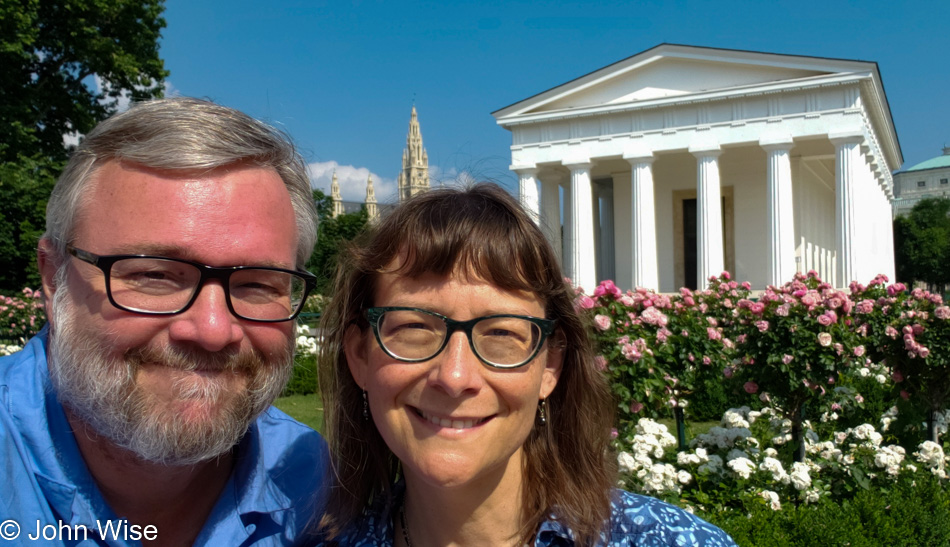
Okay, back to Vienna (by the way, that’s us in Vienna a couple of years ago). Well, actually, we need to get down there first. Travel from Frankfurt, Germany, to Vienna on the high-speed ICE only takes 6.5 hours and costs $60 each in 1st class. Check into our apartment, which is looking to cost about $1,140 for four weeks. On our previous visit, we didn’t have enough time to head over the Danube to Bratislava, Slovakia; we’ll fix that with a long weekend over there via a short 1-hour train ride costing $27 each for the roundtrip. We’ll also need to pay a visit to the Vienna Woods with a train ride out to Baden bei Wien before grabbing a couple of bikes to ride into the hills to see the Cistercian Abbey Stift Heiligenkreuz aka Abbey of the Holy Cross. We’ll leave Vienna via train for a 4.25-hour journey west; the cost of this next long haul is $82 for 1st class.
We are staying in German-speaking Austria (one of my wife’s favorite dialects) a bit longer as we head west into Innsbruck, where I’m finding rentals for an average of $1,404 a month. This begins a 56-day stay in the mountains. In one iteration of my planning, I thought we’d go from Vienna deeper into Italy right away, but the train ride was quite lengthy, so why not break it up? First up is obviously Innsbruck, and then 111 miles south, but still in the Alps, we’ll pull into our next location. While in Innsbruck, we’ll take a 16km roundtrip walk over to Hall in Tirol. Our long weekend will involve a dramatic train ride through the mountains up to Mittenwald, Germany, for a $24 roundtrip. Finally, we’ll try to squeeze in a weekend visit to Kufstein, Austria, which is an hour east and costs $44 each for a roundtrip. The train to our next destination requires a 2.5-hour ride deeper into the mountains, costing $70 each.
Trento, Italy, sits high in the Alps on the Adige River at the western end of the Dolomites. Getting out for a hike in the mountains might be a chore, but we have plenty of time to plan things and figure out the bus schedules. While in the area, I have a short weekend trip down to Brescia on the itinerary that’ll cost $38 for the train down. While researching some of these details, I came across a blogger who wrote of his full-day train ride from Trento down to Lecce near the bottom of the boot of Italy. While a 14-hour train ride sounds a bit excessive, we’ll be traveling the length of the eastern coast of Italy, and Lecce itself is an amazing-looking place. Roundtrip tickets are as little as $82, while 1st class tickets are $222 each! Our stay in Trento might be one of the more expensive at an average of $1,468 for the month based on the places I’m considering.
Regarding rental costs on this trip around Europe, consider this: our apartment in Phoenix, Arizona, costs us $1,032 per month. Water, trash, and electricity add $232 per month, while the internet costs $56. So, each month, we pay $1,320 to live 20 miles north of downtown. If we were living in Scottsdale, that cost would be easily doubled, and even then, we may not be near a place with many amenities. Now that $1,468 doesn’t look all that expensive when you see that I’m looking at staying in central old town areas whenever possible, and that price includes water, electricity, and internet, plus we won’t need a car. Also of note, almost every “home base” along this journey is for 28 days, as that’s the point where hosts on Airbnb start to offer big discounts! After doing all of my calculations, I’ve come up with an average monthly European rent of $1,417, which is $97 a month more than our current rent in a cultural wasteland.
Florence, Italy, a historic city of the Renaissance, here we come. Our ride in from the north will have taken 8.5 hours via Bologna but only costs $46 each. With so much to see and do here, we would likely only spend one long weekend away over in nearby Pisa. But should we feel comfortable with the pace of taking in Florence, we might head into Siena for a weekend, since after recently finishing the book “SPQR” by Mary Beard, it might be interesting to see the statue of the Capitoline Wolf, which is also the symbol of the town along with the wallop of other historical treasures. A day trip over to the town of Montecatini Terme (where Christian Dior died sounds intriguing too, but to be honest, the Terme di Montecatini (thermal baths) might be more interesting with their morning “Hydropinic” Therapy session for only €15.00 each. Don’t try finding a definition of “Hydropinic,” it’s not easy to find and seems specific to Italian; it means; water is to be imbibed at specific temperatures, pace, and times. Lodging for our 28 days of Tuscan indulgence will cost us about $1,330, maybe less.
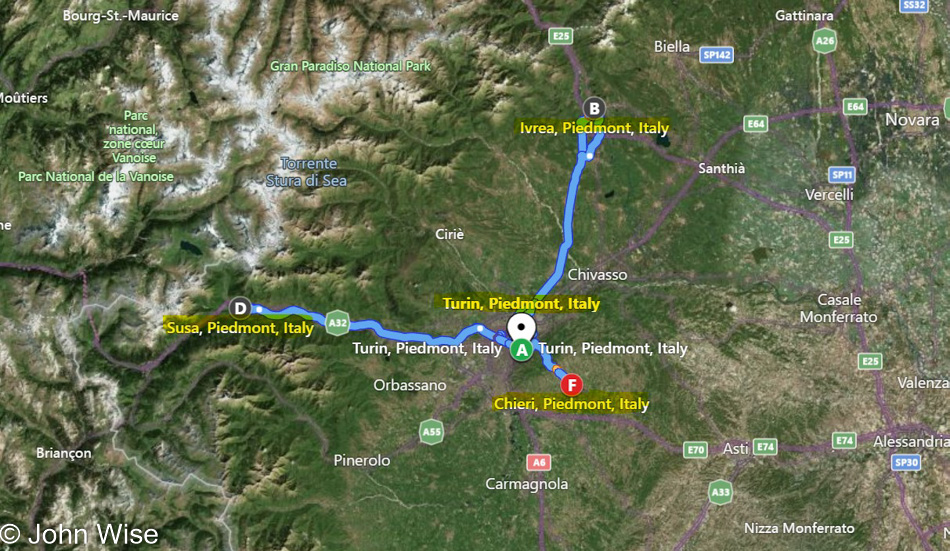
Turin will be where we conclude our 84-day/11-city journey in Italy before moving on to our next country. Piazza Carlo Alberto will be our first stop here as it was the place in which Friedrich Nietzsche collapsed back on January 3, 1889, at the age of 44, just as he left 6 Via Carlo Alberto where he was living. If we are truly lucky, we’ll take in a performance of Bizet’s Carmen at the opera or Teatro Regio di Torino, while just one street over on Via Po, we’ll be sure to try the gelato. Both were favorites of Nietzsche. To stay in the same area where this famous German philosopher once lived will cost us about $1,100 for the month. I’m certain we’ll spend an equal amount on gelato. While in Turin, I’ve penciled in a 3-day weekend in Ivrea via a 48-minute train ride for $16 roundtrip, a weekend in Susa via a 68-minute train ride for $14 each roundtrip, and a day trip over to Chieri, which takes a quick 20 minutes for only $6 roundtrip. I almost forgot, the train between Florence and Turin takes about 3 hours and costs $104 in 1st class or $78 in 2nd class; this includes Wi-Fi that strangely costs 1 cent per 24 hours while on board.
Annecy, France, between Grenoble to the south and Geneva, Switzerland, to the north, is where we are spending month six. Our apartment should cost somewhere around $1,313 for the month. To travel between Turin and Annecy, we will board a TGV in 1st class for only $63 each. With two weekends available, maybe we’ll take one of them up in Geneva and the other down in Chambéry. A day trip over to Chamonix to see Mont Blanc would give us 13 hours in town for only $13 roundtrip via train.
You might notice that I’m going into a high level of detail regarding this year-long itinerary; well, what you are seeing is my travel planning. Normally, I’d be populating all these elements into a spreadsheet so I could print them out later, but instead, I’m writing up the plan here in my WordPress editor as I go. At some point, I’ll transfer all of this to a document that can be organized, which also means it might change here and there as we approach our departure date which at this time is tentatively scheduled for April 2022. Those changes could involve a change of cities due to fluctuating rental prices, but we’d still try to stay in the same general area due to other destinations on our clockwise journey around Europe.
Who doesn’t want to go to Aix-en-Provence, France? Before you even get to the end of this blog entry, I’ll go ahead and share now, our total time in France during this year will amount to 154 days. You might think that being down here in the Côte d’Azur, we’d head over to Saint-Tropez. Nope, not this trip, as this is also about the routine around working, not an extended vacation. Plus, the train doesn’t go there. The train does go to Arles, which would make for a great 3-day weekend in my eyes, and for $42 each of us roundtrip for the 2-hour trek, we’re on it. Also in Arles is a National Park called Camargue where we can go flamingo watching and maybe see the world-famous Camargue horses. A weekend trip over to Avignon takes only 20 minutes to get there on the TGV, and 1st class train fare is $29 roundtrip each. An interesting day trip could be had at the fishing village of La Ciotat, an hour south on the coast; for a roundtrip fare of less than $30 each, we could have breakfast and lunch on the sea and be back home in Aix-en-Provence for work and dinner. An apartment for the month for us would be about $1,250. The train that brought us here from Annecy will have taken 4 hours and cost $45 each in 1st class.
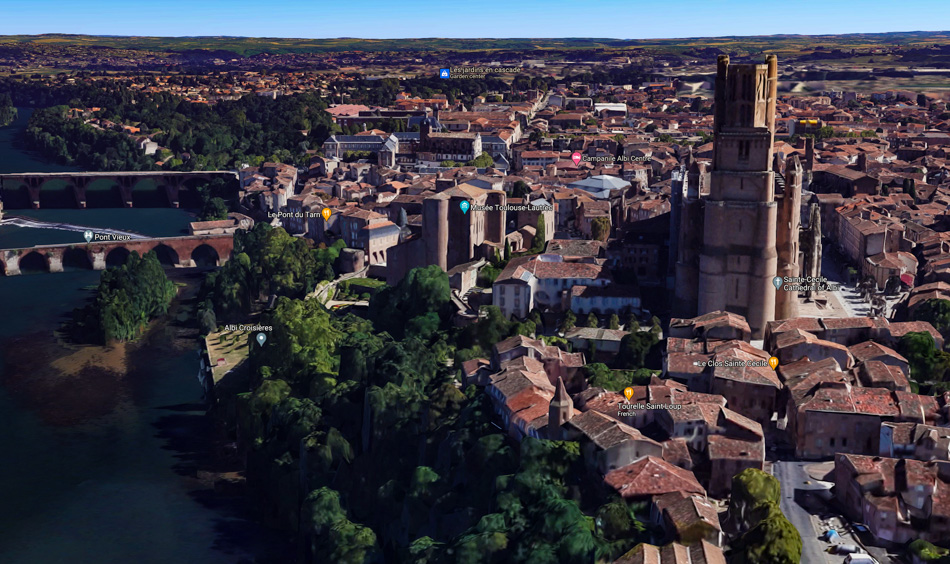
Toulouse, France, is an exception to how long we’ll stay in each location; we are here for only two weeks as we adjust our calendar to make room for a special date in December. No big price break for 14-day stays, so we’ll be putting down about $792, but at only $56 a night, that doesn’t feel bad at all. As for our train ride from Provence to Toulouse, that requires approximately 4.5 hours and costs $29 each in 1st class with free Wi-Fi. The one weekend we have in the region will see us traveling to Albi (pictured using Google Earth), and if we can squeeze in a day trip, it could be over to Gaillac, 45 minutes away by train.
Bordeaux, France, in the Aquitaine region, is next up. The 1st class train travel costs $18 each and speeds us over to Bordeaux in a quick 2 hours. While we are here in the famous wine region known around the world, it is not the biggest draw for us. Alcohol never is; history for Caroline and me holds the appeal. Like in all the cities we are calling home for a month, we’ll need to make some travel arrangements so we don’t get bored and Bordeaux is no different. Our 3-day long weekend is pegged for visiting Limoges, our shorter 2-day weekend trip is to Bayonne, and Libourne is under consideration for a day trip. The adventure in Limoges from Friday morning to late afternoon Monday is handled by train as usual and costs $68 each. Bayonne is near the Bay of Biscay just north of the Spanish border via a 2-hour train ride for only $23. Finally, the day trip to Libourne. Good thing it’s only 22-minutes away as we can leave on the 7:00 a.m. departure to have breakfast in the old town and still enjoy a solid 8 hours walking around before heading back to Bordeaux on the 3:30 train so Caroline can greet her co-workers who’ll be starting their workday. I’m making a note for us to walk over the bridge crossing the Dordogne River in Libourne and think of John Stuart Mill, who crossed over it back in December 1854; he was the author of On Liberty. The average cost for an apartment in Bordeaux during our stay is about $1,250.
Frankfurt, Germany, for Christmas and New Year’s with our family, will require a 7-hour ride passing through Paris, costing $252 for the two of us in 1st class, traveling first on a TGV and then on an ICE, which is Germany’s highspeed train service. It’s a bit expensive as we are traveling on Sunday. And just then, it occurs to me, why not spend a night in Paris? I know one day is not enough in the City of Light, but you can walk and see many things if you have an entire day. Walking out of the Montparnasse train station towards the Eiffel Tower, over the Seine to the Arc de Triomphe, down Champs Elysees to the Louvre, and back to the train station is only 12km, requiring 2.5 hours, easy peasy. Checked on hotels, and we’ll certainly find something for a night between $100 and $150. Leaving Bordeaux on the TGV in 1st class at 7:00 in the morning has us arriving in Paris by 10:00 a.m. for only $39 each; from there, we need to drop our bags at a hotel until we can check-in. The next day, we’ll leave Paris at 3:20 p.m., arriving in Frankfurt at 7:00 p.m. for only $59 each in 1st class, again with free Wi-Fi.
After our holiday celebrations in Frankfurt, we’ll be heading back to France as we move on to Rennes over in Brittany. Seeing we again have to pass through Paris, why not stop once more for a day in this amazing city? If we leave on the 6:53 out of Frankfurt for only $63 each in 1st class, we’ll arrive in Paris at 11:00 in the morning at Paris Est station, which is a 30-minute walk to the Louvre. There are a ton of hotels for between $80 and $120 right near the train station; maybe we should consider staying in this area for our night in Paris. The next day, we have to leave Paris at 5:00 p.m. for the train bound for Rennes, France, arriving at 6:30 for only $33 each, and again it’s in 1st class. Please note that by breaking up the trip and having these Monday travel days, we only spent $194 each to travel from France to Germany and back to France for a savings of $116, easily paying for at least one of our nights in Paris.
Rennes welcomes us back to our 28-day habit of staying in a location. Having left America just nine months earlier and our 50-to-200-year-old cities, we will be getting our fill of 2,000-year-old places. Rennes is one of those cities that promises to deliver. From medieval architecture to a cathedral and many churches, I’m certain will find something here to charm us. An apartment in the old town looks to cost about $1,310 a month, some cheaper, many more expensive. Over the course of the month, I have three out-of-town destinations planned. The long weekend I’m considering takes us to Dinan ($29 roundtrip by train) about 90 minutes away and just south of Saint-Malo. While Saint-Malo is close, it might be better to visit as a day trip as the train from Rennes is only an hour, and it would appear that visiting on a weekday with good weather would be preferred at this extremely popular and often crowded site. A weekend visit down to Nantes takes about 90 minutes and costs $60 each for the roundtrip, or maybe we bite the bullet and book an expensive room out on Mont Saint Michael.

Our tickets should have been reserved long in advance for the 4-hour journey to Rouen, France, in Normandy. At the time I’m writing this, the cost for 1st class travel is $52 each. An apartment in or near the old town is averaging $980. Our long weekend here is a special request from Caroline. We will travel to Bayeux to see the famous tapestry with our own eyes. Roundtrip tickets to Bayeux up near the coast are $62 each, with nice rooms on Airbnb for $60 and up. Our shorter weekend side trip will be to Dieppe for $10 each to travel up to the coast; I make note that we must eat at Café des Tribunaux, where famed artists such as Renoir, Monet, and Flaubert were known to drink and also try the local moules Frites (mussels and fries). If we can carve out time on a Saturday or Sunday, we should take a day trip down to Claude Monet’s garden in Giverny (pictured). It’s only 45 minutes away but has a very limited train service, costing $30 each for the roundtrip. Due to the strange schedule, we will be spending the day between the beautiful village of Vernon and Giverny from 8:00 a.m. until 9:00 p.m. and can only do so on certain days.
Something about transportation costs to consider: we won’t have a car payment, nor are we renting a car for this year of being nomads. Our train travels, mostly in 1st class, will have cost us approximately $2,950 by this time, add in the tickets for Rouen to Bruges, Belgium, and from there to Groningen, Netherlands, plus our return to Frankfurt, Germany, and the cost of the majority of our train travel will amount to $3,130. Does that sound like a lot? Consider that our 2019 Kia Niro costs us $415 a month, add $60 a month for insurance, and outside of pandemic times, we would typically spend about $120 a month on gas or $7,140 a year for our car, not considering any maintenance. For our $3,000, we’ll have visited seven countries over the course of 365 days and taken in at least 46 cities, big and small, loaded with thousands of years of history. Even calculating the airfare to Germany from Phoenix, Arizona, we’ll still have spent less on travel costs than paying for a car in America.
Hello Bruges, Belgium. Instead of traveling on a Sunday, which has been the routine, we are coming in on Saturday as train prices for Sunday were twice as high. By traveling a day early, we are only paying $74 each, in 1st class, of course. Bruges is going to be the most expensive city we will stay in, with a 28-day cost averaging a whopping $1,750, and goes way up from there. Don’t bother suggesting the outskirts of town, as it’s pricey there too. One weekend, we’ll head over to Kortrijk to visit a Flemish city on the River Leie. Train tickets to Kortrijk are only $25 roundtrip, and the ride takes about an hour each way. Another long weekend will see us off for three days of bicycling around Ghent. Train price is $22 roundtrip for the 20-minute ride while apartments can be had for between $60 and $115. If time allows, maybe we can squeeze in a day trip to the coast over in the Ostende area for a re-visit to the Paul Delvaux Museum, one of Caroline’s and my first dates.
Groningen is our last big 28-day stay. For $49 and a ride across the Belgian and Netherlands landscapes, we’ll enjoy our 6-hour journey across some very flat land. If I thought Bruges was on the costly side, Groningen is coming in at a slightly cheaper $1,725 a month, hardly a savings. Caroline and I have traveled many times from Frankfurt to Belgium and Holland in the past, but not a single visit in over 25 years. This month will see me turning 60 as it will be April of 2023 at this point and so a month of cycling in the Netherlands sounds about perfect. Of course, Amsterdam is appealing, but we’ve been there more than a few times, so it feels like we should be checking out new places as much as possible. One of our two weekends out of the city will take us east into Leeuwarden for a couple of days at about $80 a night, and if we are lucky, maybe we can book a few days in the incredibly popular village of Giethoorn for between $90 and $150 a night. The train from Groningen to Leeuwarden takes about 30 minutes each way, with a train to Giethoorn having to detour through Leeuwarden to get down to our destination, and costs $55 each for a roundtrip.
Our return to Frankfurt from Groningen is a mere $89 in 1st class, taking 6 hours to get home with an 8:30 a.m. departure, arriving by 2:30 in the afternoon, leaving enough time for us to go get us some Grüne Soße in celebration.
That’s the end of year one. A follow-up blog entry about our walking schedule will be posted as I make progress on it. Maybe you are thinking, who plans their daily walks? Well, take Vienna for example; we have 28 days there, but we also have about five travel days away from the city. With 23 days left over and the desire to revisit sites and museums we’ve rushed through previously, we have to dedicate time to those activities in addition to seeing new corners of Vienna. We have eight possible spurs where the subway runs that we’ll have to choose from to ride to the end station, and from there, we walk back. This is fairly easy as we are only looking at between 8km to 14km per leg or 5 to 9 miles. This has to be done for all 12 cities, and where we can add bicycles or kayaking to the mix, I have that to figure out, too. Did I share that there are at least a dozen tram lines in Vienna that might have interesting destinations, too, along with a number of dedicated bike paths from the city out into the surrounding nature? And what about a cooking class or two? Which triggers my thinking about must-try dishes in each location. It’s endless.
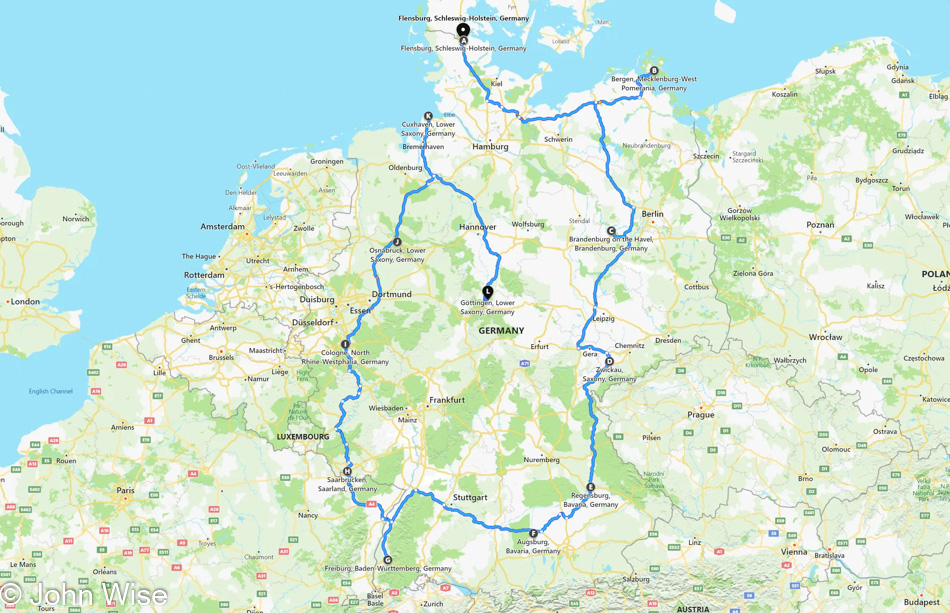
This is the map of our encore year where instead of settling down, we’d roam Germany’s corners with 12 destinations that would allow us to explore the far reaches outside of where Caroline grew up in Frankfurt. Of course, none of this is cut in stone, and maybe it all has to wait until we are actually retired, but if you don’t dream of what comes next, nothing will arrive.
